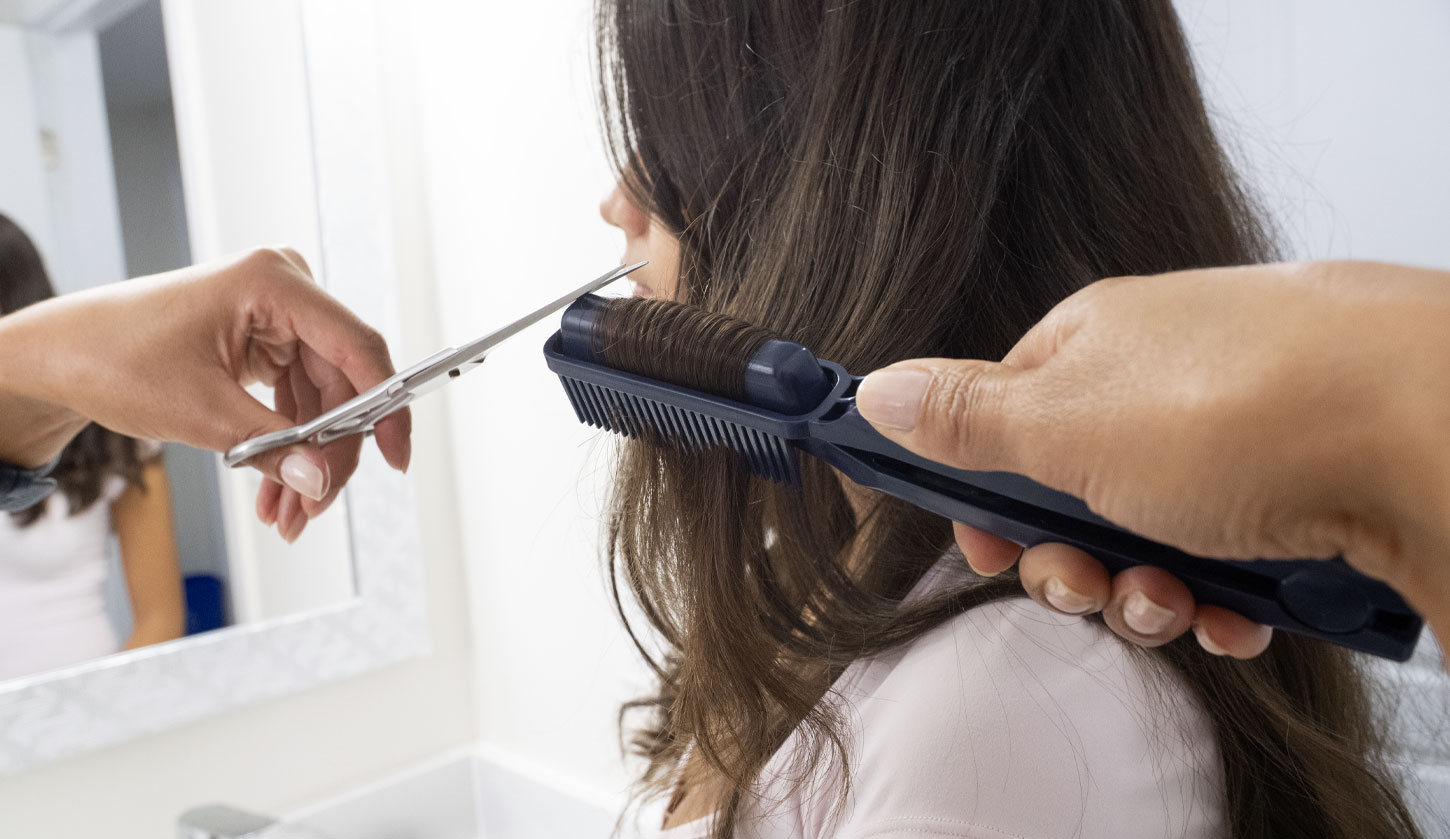Your cart is currently empty!
July 18, 2025
It’s a familiar story. You stand in front of the mirror, running your fingers through your hair, and you feel it—that rough, dry texture. You see it—the dullness where shine used to be, the frizzy halo, and the tiny, persistent white dots at the ends of your hair.
You’ve invested so much. You’ve bought the masks, serums, and conditioners that promise to “repair” and “rebuild.” You’ve dedicated countless hours to routines aimed at bringing your hair back to life. Yet, the frustration remains. The damage always seems to return, leaving you to wonder what you’re doing wrong.
Here is the unspoken truth: You’re not doing anything wrong. You’ve just been told the wrong story.
The story of hair care is often one of miracle cures. But the real story, the scientific one, is much simpler. The single most important fact to understand about your hair is this: it cannot biologically repair itself. Unlike our skin, which can heal from a cut, our hair is not made of living cells that can regenerate. Once it’s damaged, it’s permanently damaged.
Every day, our hair faces a battle. Damage has become increasingly common due to a host of factors. The very tools we use to feel beautiful, like flat irons and hair dryers, contribute to the problem. The chemical processes, such as colouring and bleaching, that allow us to express our personality also leave behind consequences. Even environmental factors, such as UV radiation, play a part.
Each of these actions creates tiny, microscopic fractures along the hair shaft. This is where the true heartbreak begins. Scientific research confirms that once hair has been fractured or split, it is irreparable. That damage doesn’t just stay at the tip. It travels, splitting the hair strand further and further up towards the root, leading to more dullness, more breakage, and that lifeless look we desperately try to fight.
So, what about the “claimed solutions” lining the store shelves? While deep conditioners and hair masks feel wonderful, they are only a temporary fix. They work by externally conditioning the hair or filling the damaged cuticle, but they can’t truly heal the underlying fracture. Even vitamins, which are essential for new growth, can’t prevent existing damage from worsening.
The only proven solution to achieve healthier hair and prevent damage from spreading is to physically remove the affected strands by trimming them.
For too long, this has felt like a punishment. It has meant sacrificing the length you love for the health your hair needs. But understanding the science is not about admitting defeat; it’s about empowerment. It’s about shifting your strategy from temporary, superficial fixes to a real, lasting solution. It’s about choosing a healthy, holistic approach that works
With your hair’s nature, not against it.
Now that you know the truth, you can stop asking, “How can I fix my damaged hair?” and start asking, “What is the best way to remove the damage?”
Stay with us, and we will show you how to win this battle for good, without sacrificing the beautiful length you’ve worked so hard to achieve.
167

